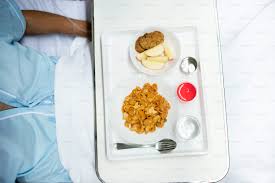In hospitals, the focus is always on providing the best care for patients, but one often overlooked aspect is the importance of nutrition. Whether it’s a patient recovering from surgery or a healthcare worker grabbing a quick snack during a busy shift, food plays a crucial role in maintaining energy levels, improving recovery, and ensuring overall well-being. One innovative solution that has gained traction in hospitals across the world is the use of food carts.
Food carts in hospitals are quickly becoming a game-changer in the way healthcare institutions provide food services. They are portable, efficient, and versatile, offering a convenient way to deliver nutritious meals, snacks, and drinks to both patients and hospital staff. In this article, we will explore the growing role of food carts in hospitals, their benefits, and how they are enhancing the hospital experience for both patients and staff.
The Role of Food Carts in Hospital Settings
Food carts in hospitals serve multiple purposes and cater to different needs. They are designed to provide a wide range of food and beverages, from nutritious meals for patients to quick snacks and refreshments for staff. Here are some of the key roles food carts play in hospital settings:
1. Patient Meal Delivery
In many hospitals, patients are often confined to their rooms for the duration of their treatment. Traditional hospital meal services may not always meet the needs of patients, particularly those with dietary restrictions, food preferences, or specific medical conditions that require tailored nutrition. Food carts provide a flexible and personalized meal delivery service, ensuring that patients receive the right meals at the right time.
Patients who are on special diets, such as those with diabetes, heart conditions, or food allergies, can benefit greatly from food carts, as the food can be customized to meet their specific requirements. Additionally, food carts allow for quicker meal delivery, reducing wait times and ensuring that patients get their food while it’s fresh and ready to eat.
2. Snacks for Staff and Visitors
Hospitals are high-pressure environments, with staff working long shifts to provide the best care for patients. For many healthcare workers, a quick snack can make a world of difference in maintaining their energy and focus. Food carts are often stocked with a variety of snacks, beverages, and quick meals, giving staff members easy access to refreshments during their shifts.
Visitors also benefit from food carts. Families and friends who spend long hours in hospitals often need a quick snack or drink to keep their energy up while waiting for their loved ones. By having food carts strategically placed around the hospital, visitors don’t have to leave the premises to grab something to eat, making their experience more convenient and less stressful.
3. Support for Special Diets
Hospitals often have patients with unique nutritional needs. Whether it’s for patients recovering from surgery, those undergoing cancer treatments, or individuals with chronic conditions like kidney disease, providing specialized diets can be challenging. Food carts can be equipped to deliver customized meals that align with patients’ dietary restrictions, ensuring they get the right nutrients to aid in their recovery.
For example, patients with low-sodium or low-fat diets can receive meals that are tailored to their needs, while those undergoing chemotherapy can be served meals that are easy to digest and provide the necessary vitamins and minerals to boost their immune system. Having food carts dedicated to specific diets makes it easier for hospitals to meet the nutritional requirements of patients without overwhelming kitchen staff.
Benefits of Food Carts in Hospitals
The integration of food carts in hospitals has numerous advantages, from improving patient satisfaction to increasing efficiency. Here’s a closer look at the key benefits they offer:
1. Convenience and Accessibility
One of the primary reasons why food carts are becoming more common in hospitals is their convenience. They make it easy for patients, staff, and visitors to access food without having to leave their areas. For patients who are unable to leave their rooms, food carts provide an efficient way to deliver meals and snacks directly to their bedsides. For staff, food carts reduce the time spent searching for food during breaks, allowing them to focus more on their responsibilities.
In some hospitals, food carts are even designed to travel between floors, allowing them to reach patients who may be in different parts of the hospital. This flexibility ensures that food delivery can be timely and efficient, preventing delays in meal distribution.
2. Enhanced Patient Satisfaction
Good food is an essential part of patient care, and patient satisfaction is often influenced by the quality of meals provided. Hospitals that use food carts can improve patient satisfaction by offering meals that are both fresh and well-presented. Patients are more likely to appreciate a well-crafted meal when it’s delivered promptly and conveniently.
Additionally, food carts can offer a variety of meal options, which helps patients choose foods that they enjoy. When patients have more control over their food choices, they are more likely to eat and enjoy their meals, which can contribute to a faster recovery.
3. Improved Efficiency
Hospital kitchens can be under significant pressure, especially in large institutions that serve hundreds or even thousands of meals a day. Food carts can help improve the efficiency of food delivery by reducing the workload of kitchen staff. By delivering food directly to patients, food carts minimize the need for multiple staff members to deliver meals to each individual room. This allows hospital kitchens to streamline their operations, improve delivery times, and focus on preparing meals that meet the specific needs of patients.
4. Hygiene and Food Safety
Food safety is a top priority in hospital environments, where compromised immune systems are common. Food carts are equipped to maintain food at the appropriate temperature, whether hot or cold, ensuring that meals are safe to eat. Additionally, food carts are easier to clean and disinfect compared to traditional food delivery methods, reducing the risk of cross-contamination.
By ensuring that food is delivered in safe, hygienic conditions, food carts help hospitals maintain high standards of cleanliness and food safety.
5. Cost-Effective
Although food carts require an initial investment, they can ultimately be a cost-effective solution for hospitals. By reducing labor costs associated with meal delivery and improving efficiency, food carts help hospitals save money in the long run. Additionally, the ability to better manage food orders and minimize food waste can contribute to significant cost savings over time.
Challenges and Considerations
While food carts offer numerous benefits, there are a few challenges that hospitals should consider when implementing them:
1. Space and Accessibility
Hospitals need to ensure that food carts can easily navigate hallways and reach patient rooms without obstruction. This requires careful planning and design to ensure that food carts are accessible in every part of the hospital, including areas with limited space.
2. Staff Training
To ensure that food carts are used effectively, hospital staff must be properly trained in their operation. Staff should understand how to maintain the carts, keep them clean, and ensure that meals are delivered at the correct temperature.
3. Cost of Equipment
The initial investment in food carts, as well as ongoing maintenance costs, can be a concern for some hospitals. However, the long-term benefits typically outweigh these initial costs.
Conclusion
Food carts in hospitals are revolutionizing the way healthcare facilities provide meals and snacks to patients, staff, and visitors. These carts offer convenience, enhance patient satisfaction, improve operational efficiency, and help meet the specialized dietary needs of patients. By integrating food carts into their service offerings, hospitals can create a more streamlined and patient-centered experience that contributes to better care and overall well-being.
As the healthcare industry continues to evolve, food carts are likely to become an essential part of the hospital ecosystem, ensuring that nutrition is always just a cart ride away.



